Boris Johnson’s decision to relax the lockdown carries “some risk” as the daily number of new coronavirus cases remains “relatively high”, a top scientist advising ministers has said.
Many experts would prefer to see the Covid-19 infection rate at a lower level before easing restrictions, said Professor John Edmunds, who attends meetings of the Scientific Advisory Group for Emergencies (Sage). He said there was little room for manoeuvre if the test, track and trace system fails to keep cases down.
The latest Office for National Statistics data suggests there are around 54,000 new coronavirus infections per week in England outside hospital and care settings – nearly 8,000 per day.
Download the new Independent Premium app
Sharing the full story, not just the headlines
Professor Edmunds questioned whether the test, track and trace system would be able to keep the so-called R value, or reproduction rate, below one unless “significant numbers of wider social distance measures” were in place.
It comes as a tranche of Sage documents was published online, which revealed:
- Evidence of low public compliance with self isolation as only 50 per cent of those who developed symptoms stayed at home for seven days
- Test, track and trace was only likely to be effective if 80 per cent of contacts were tracked down and isolated within 48 hours
- Experts said public should be advised to wear face coverings on 21 April but advice was not issued by ministers until 11 May
- A request was made for pastoral support for Sage members due to the pressures of the work
- Ben Warner, a data scientist who worked for Vote Leave, attended meetings on behalf of Downing Street
Professor Edmunds said: “I think many of us would prefer to see the incidence driven down to lower levels because that would mean we have fewer cases occurring before we relaxed the measures.
“If we had incidence at a lower level, even if the … level went up a bit, we wouldn’t be in a position where we were overwhelming the health service.
“I think at the moment with relatively high incidence, relaxing the measures and with an untested track and trace system, I think we are taking some risk here.
“Even if that risk doesn’t play out and we keep the incidence flat, we’re keeping it flat at quite a high level.”
More than 50 documents detailing scientific advice to the government from the beginning of the pandemic until the start of May were published on Friday afternoon.
The latest news on Brexit, politics and beyond direct to your inbox
One paper, by a sub-group of behavioural scientists in April, suggested only around half of people with coronavirus symptoms self-isolate for a week. This raised concerns over whether members of the public would self-isolate if they came into contact with an infected person – they would be asked to do so under the test, track and trace system.
Advisers said track and trace was likely to be effective if 80 per cent of contacts were tracked down and isolated within 48 hours. They warned that there is a risk individuals become “less willing to comply” if they are repeatedly asked to isolate and “are impacted financially”.
The document pointed to “major behavioural barriers” to widespread use of the NHS contact tracing app, which is currently being developed, including lack of trust and technological knowledge, particularly among older people.
It also warned that Russia would “scrutinise all western responses to Covid-19 as a significant intelligence gathering opportunity”.
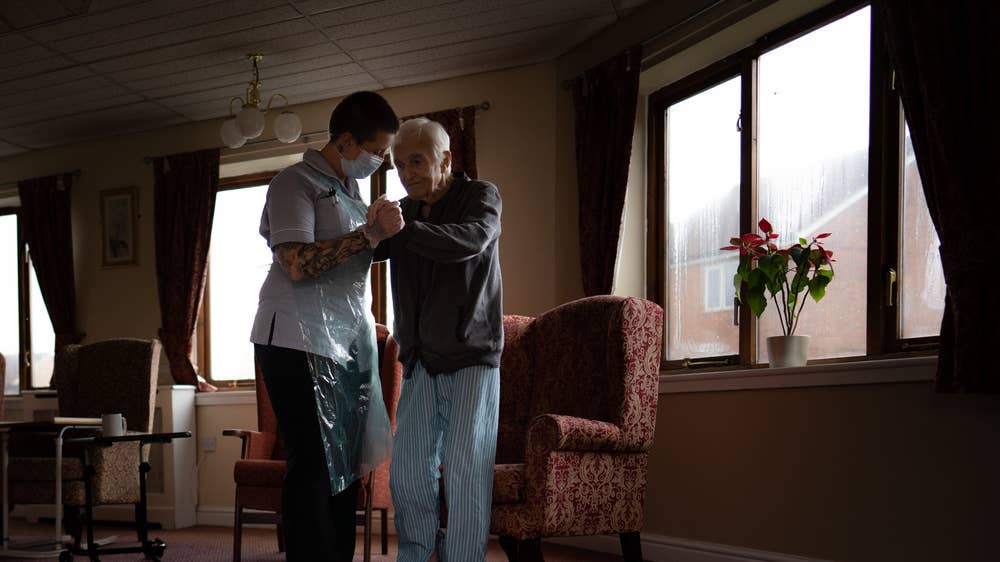
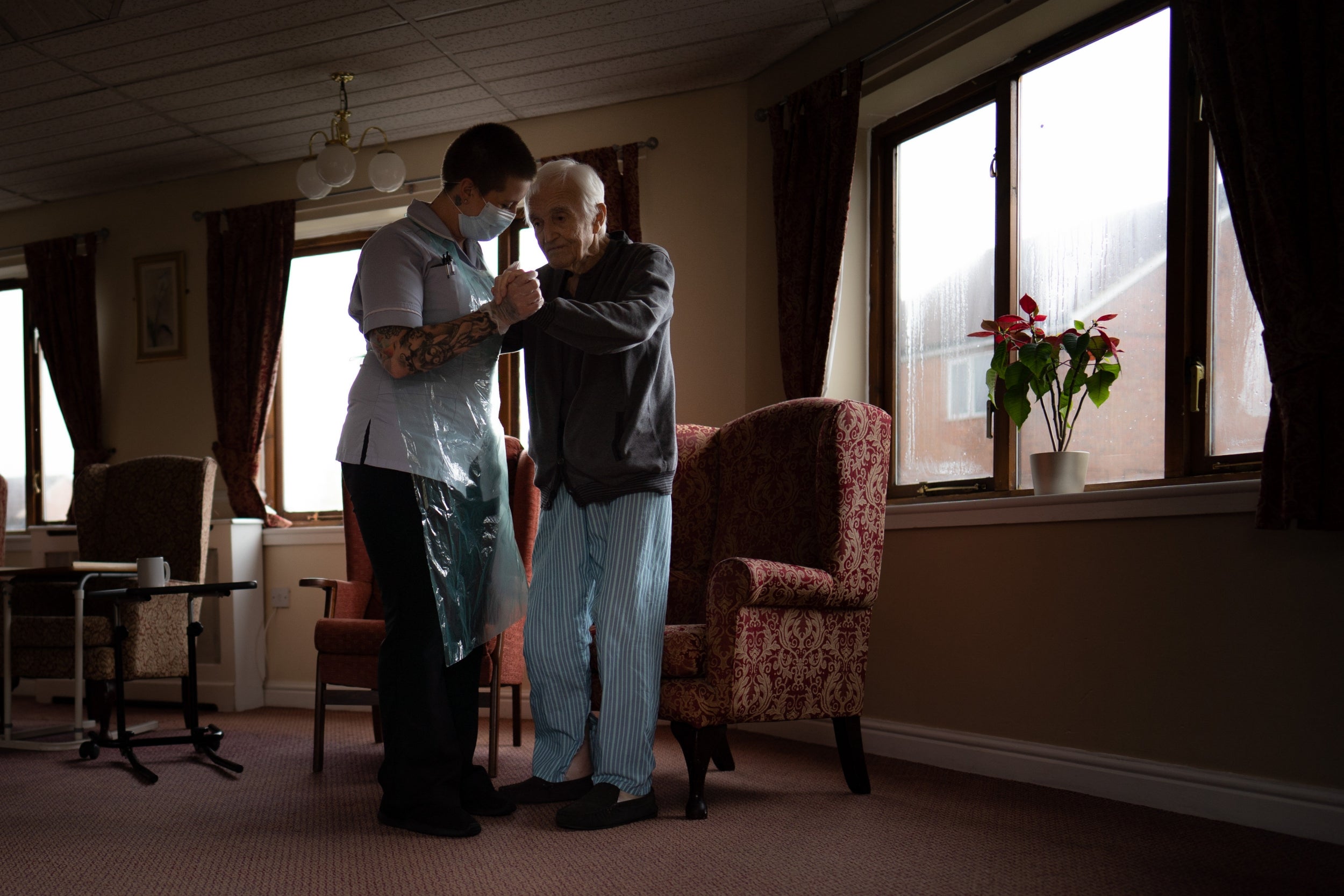
1/18
Jack Dodsley, 79, with a carer in PPE at Newfield Nursing Home
Tom Maddick/SWNS
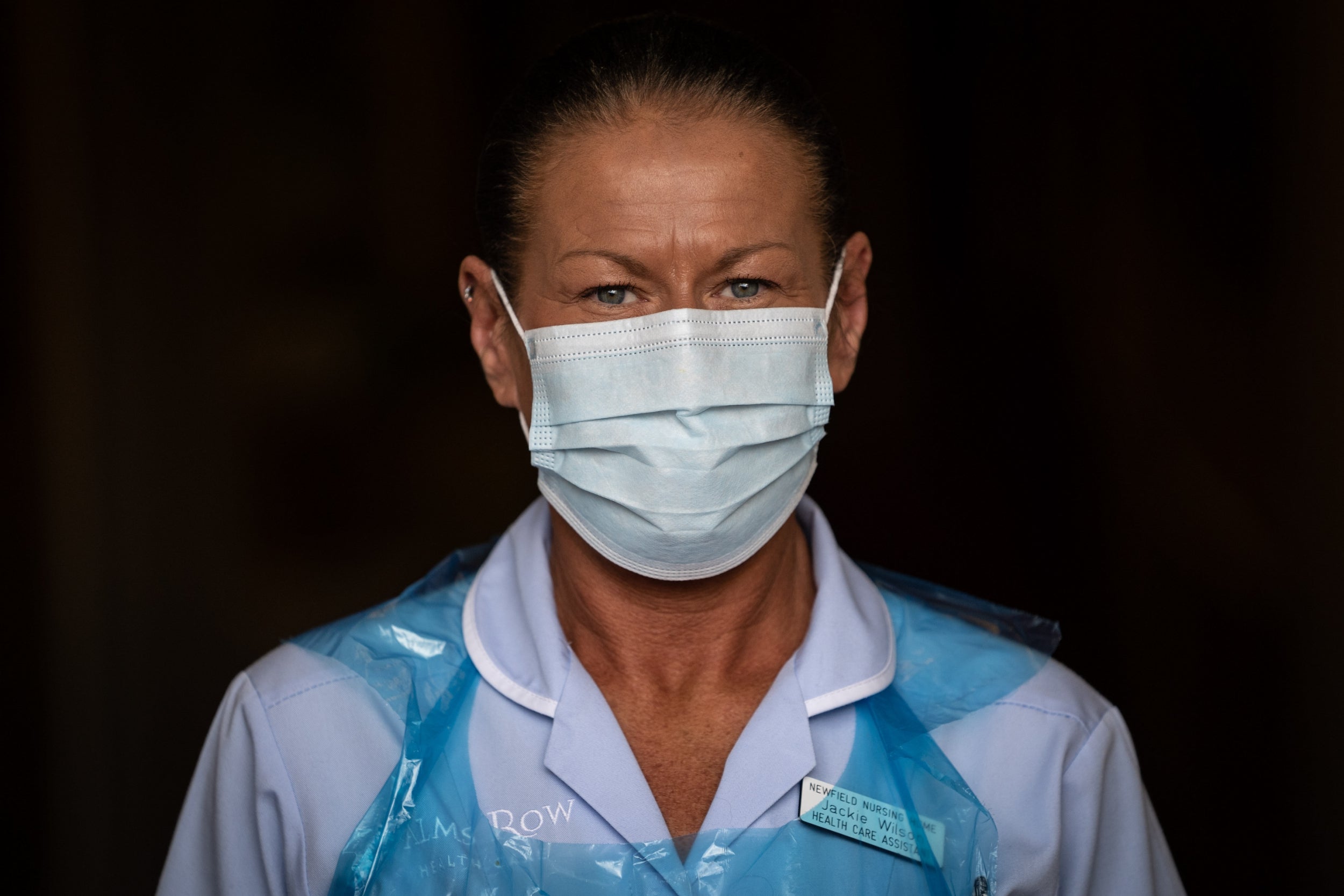
2/18
Jackie Wilson, a healthcare assistant, wearing PPE before going into rooms
Tom Maddick/SWNS
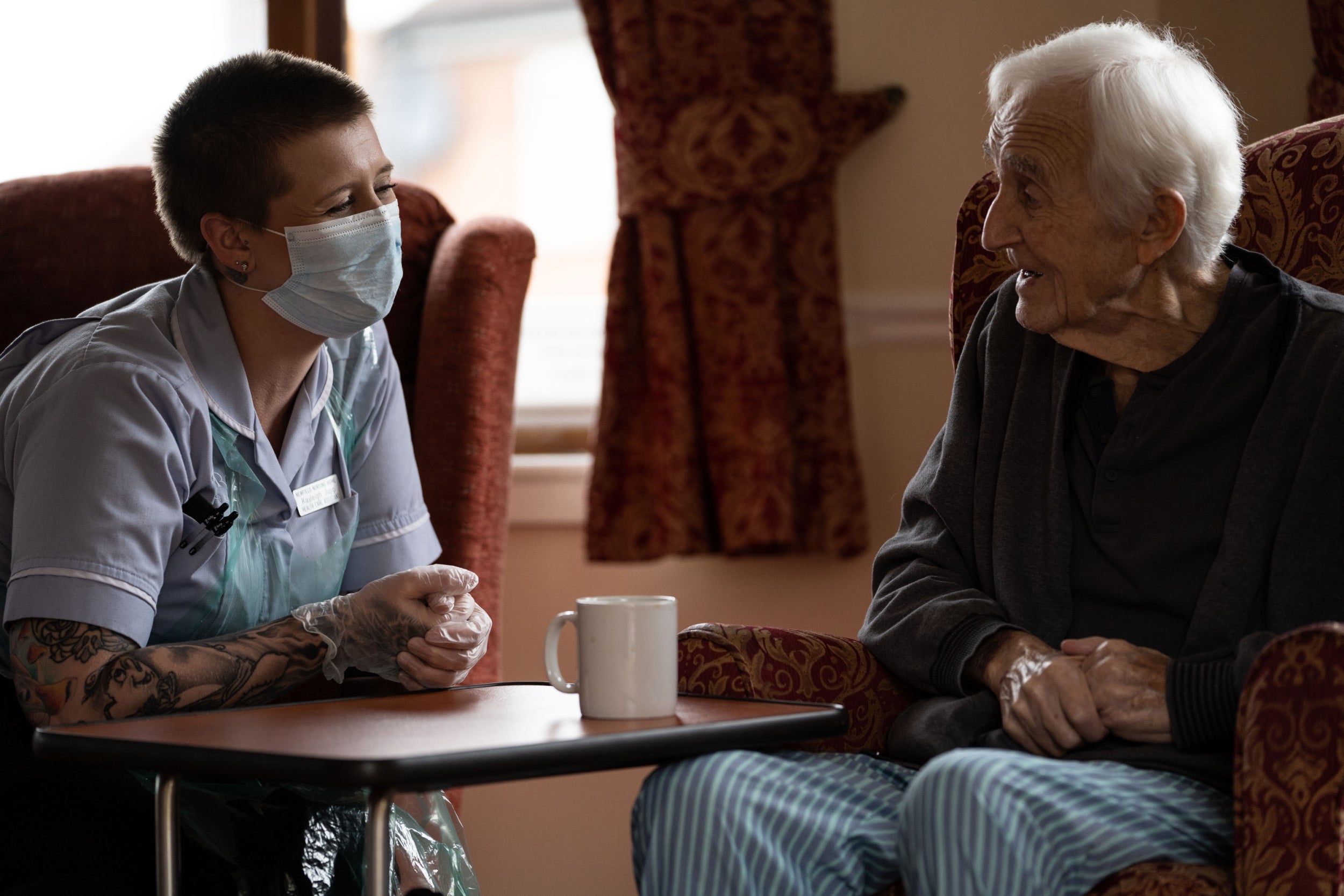
3/18
Jack Dodsley, 79, speaks to a carer at Newfield Nursing Home
Tom Maddick/SWNS
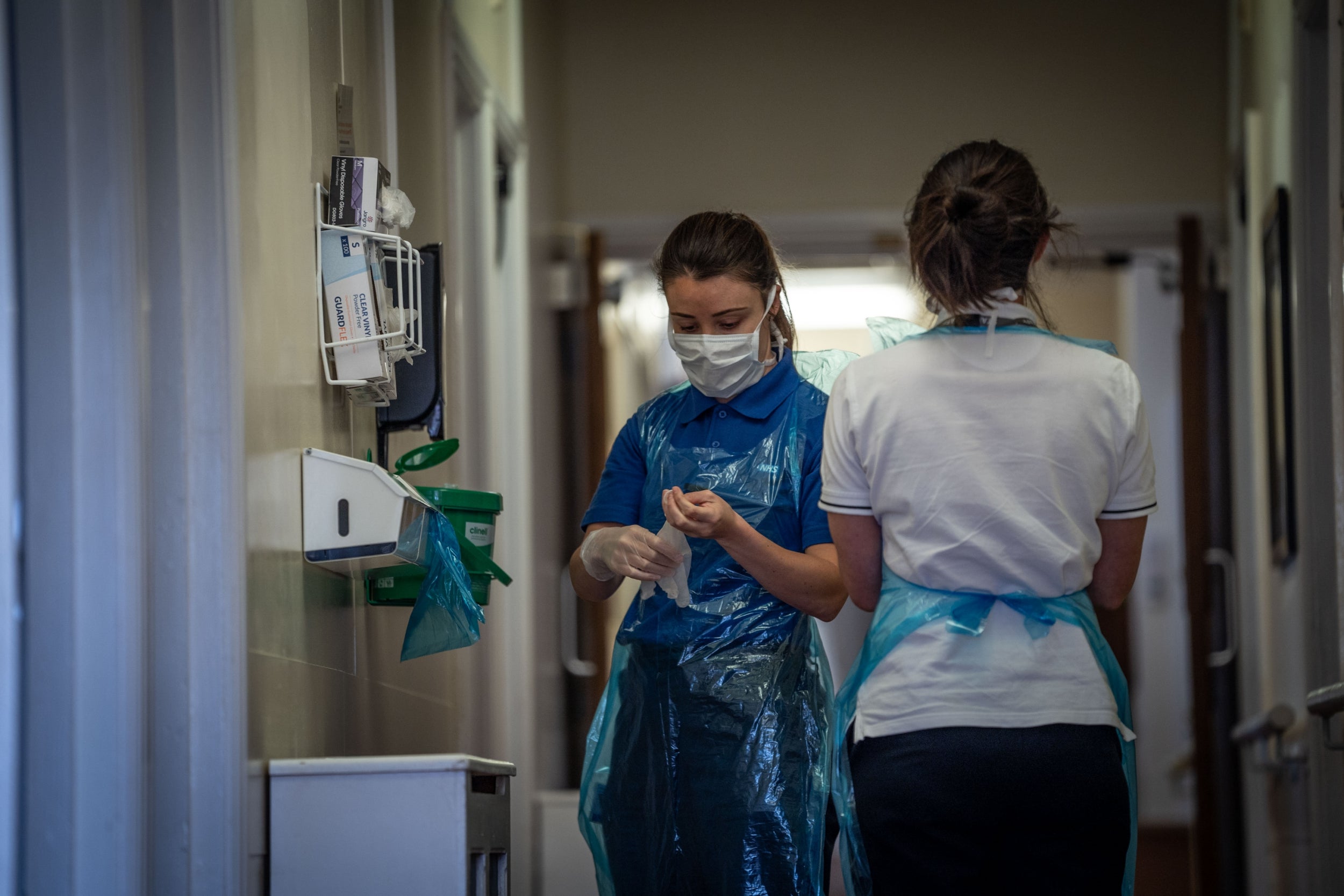
4/18
Carers working at Newfield Nursing Home
Tom Maddick/SWNS
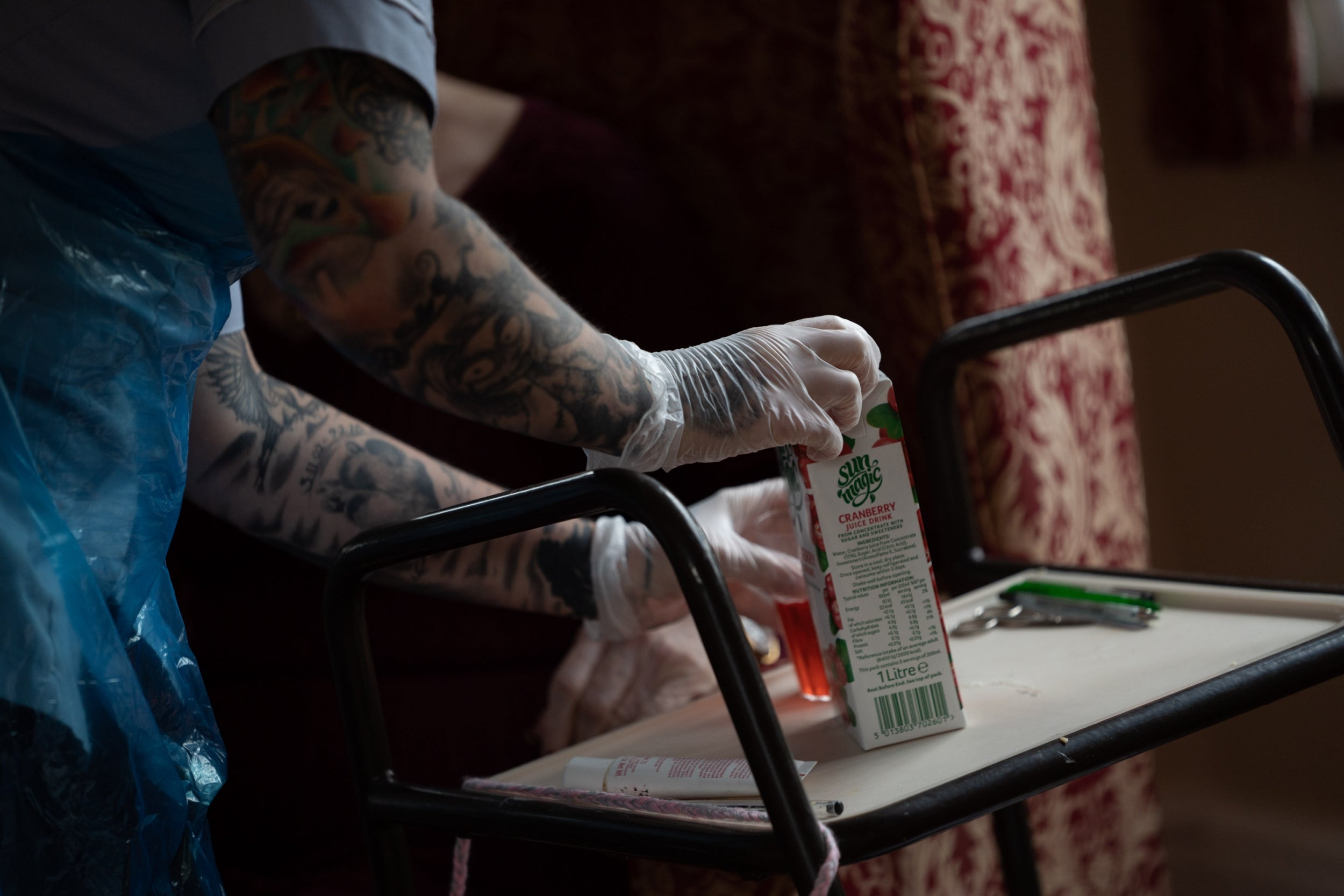
5/18
A care worker wearing PPE opens a drink carton
Tom Maddick/SWNS

6/18
Jack Dodsley, 79, sits with a carer
Tom Maddick/SWNS
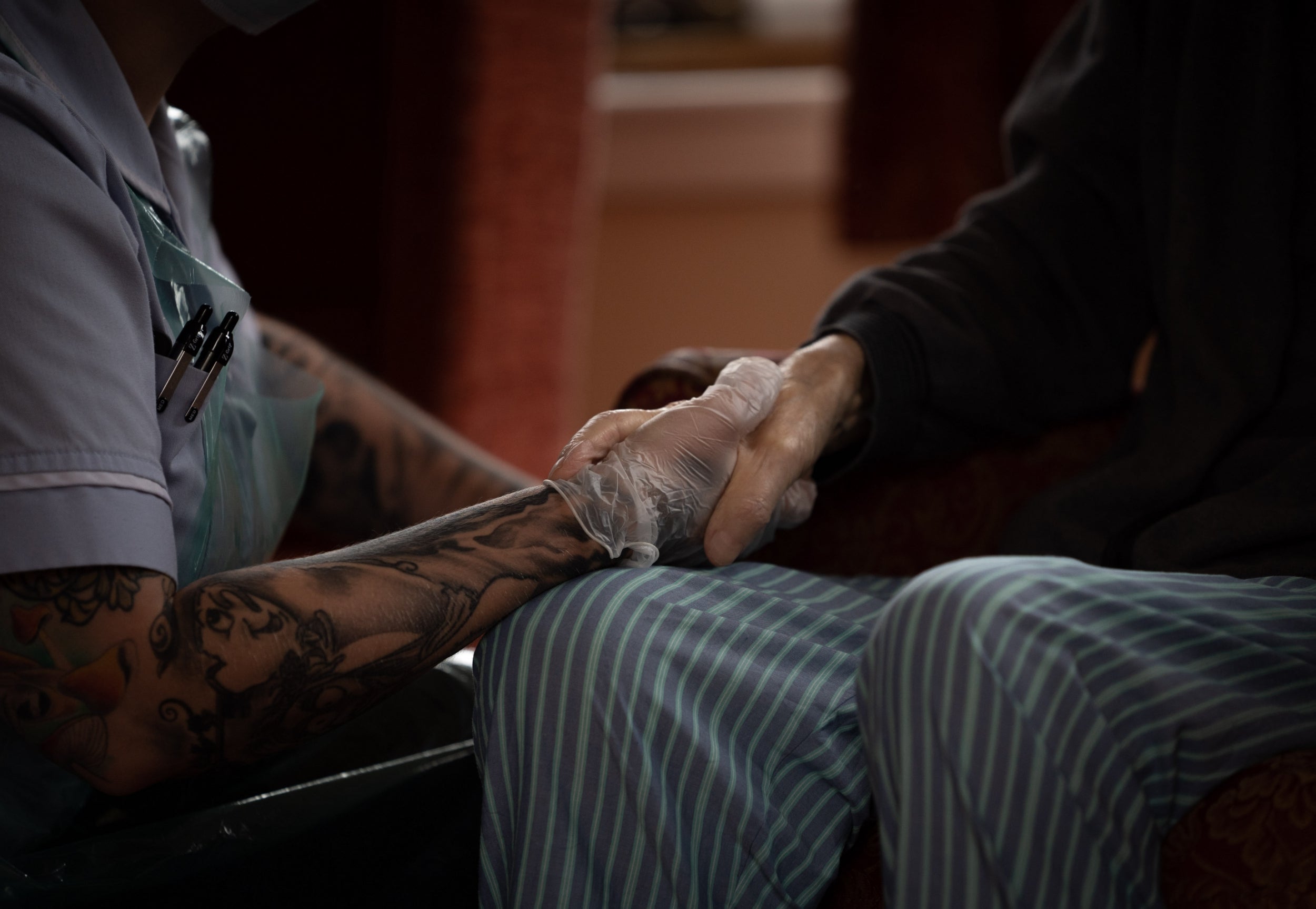
7/18
Jack Dodsley, 79, with a carer in PPE
Tom Maddick/SWNS
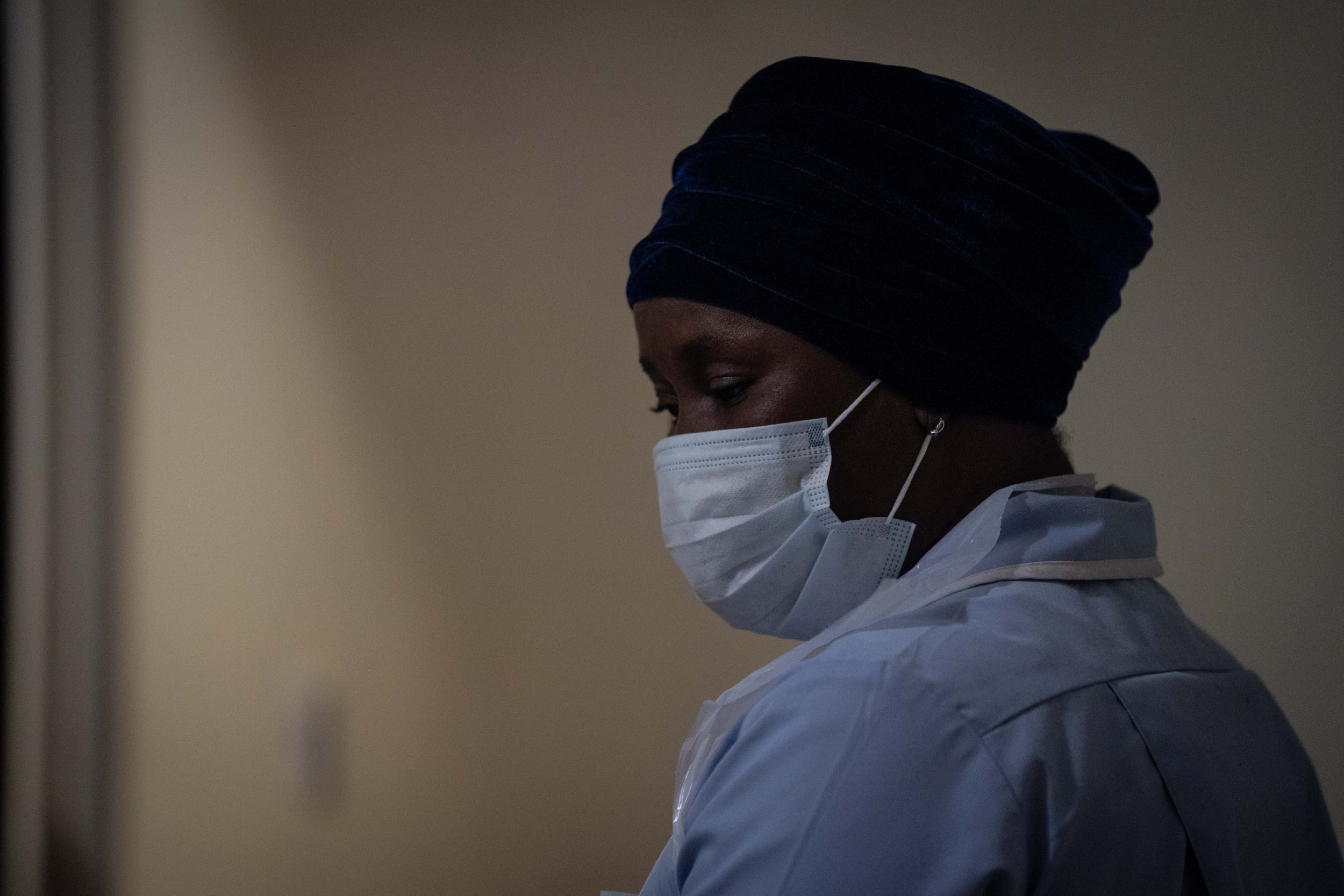
8/18
A care staff member wearing PPE
Tom Maddick/SWNS
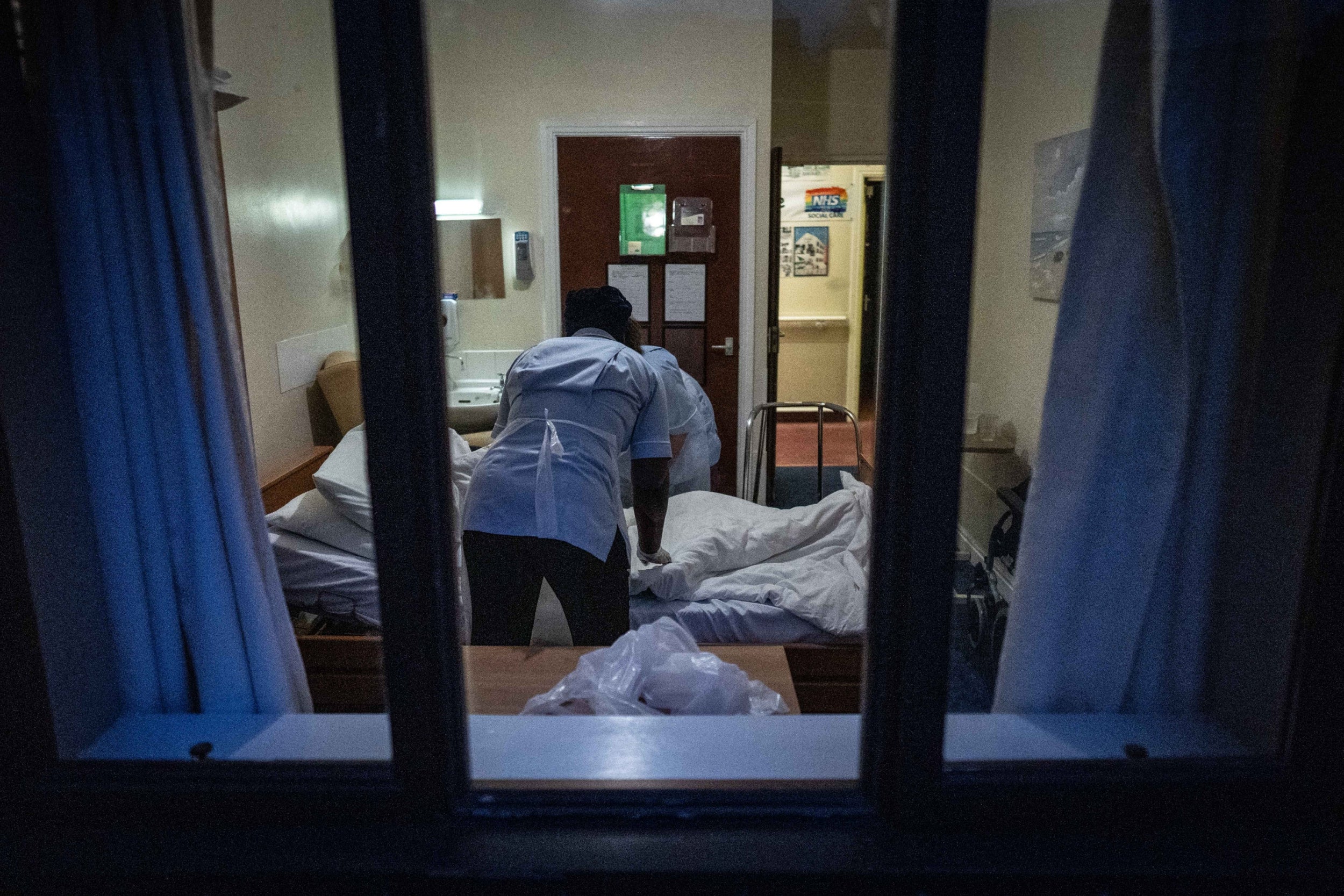
9/18
A staff member at Newfield Nursing Home looks after a resident
SWNS
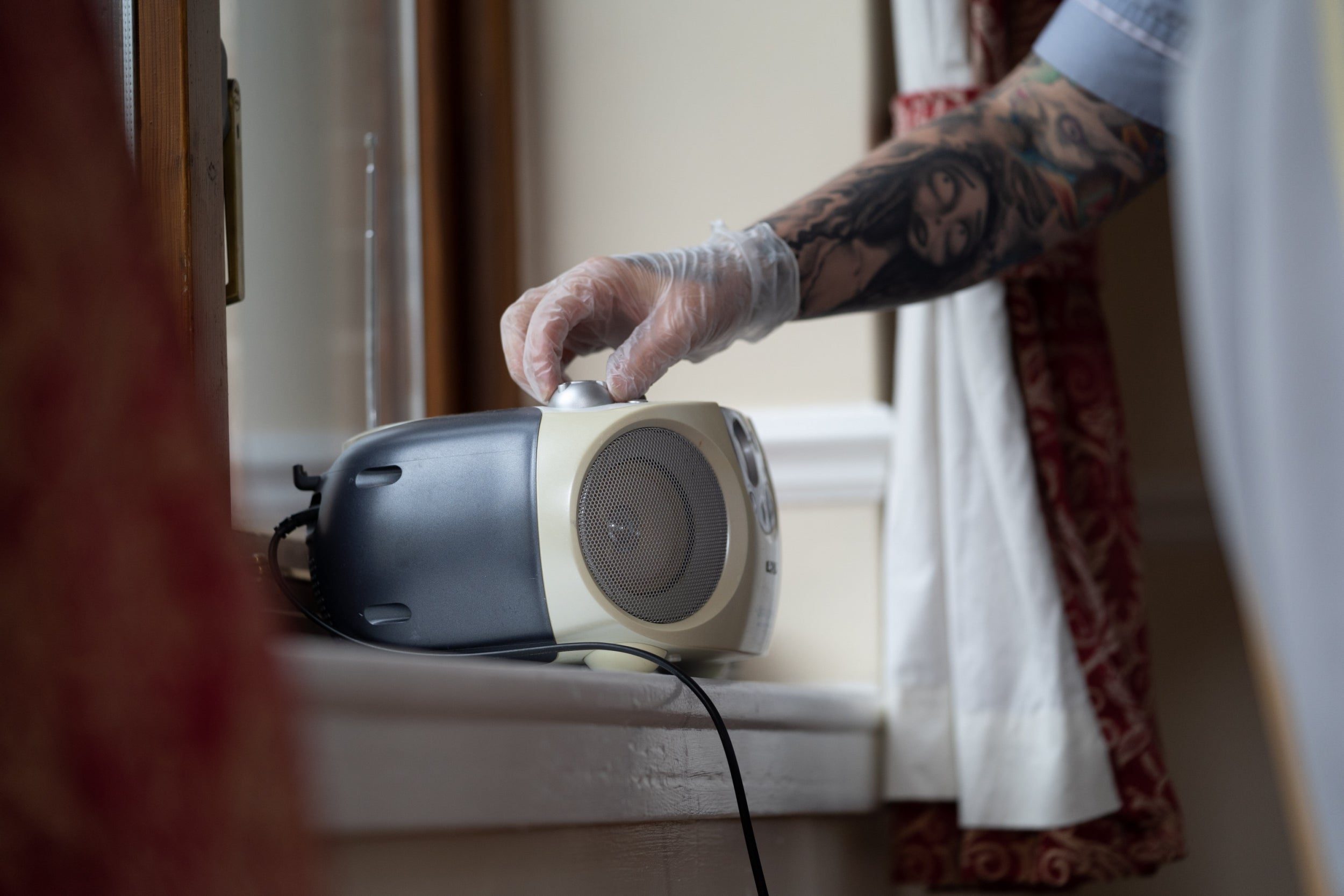
10/18
A carer wearing PPE uses a speaker
Tom Maddick/SWNS

11/18
A carer helps Jack Dodsley, 79, from his chair
Tom Maddick/SWNS
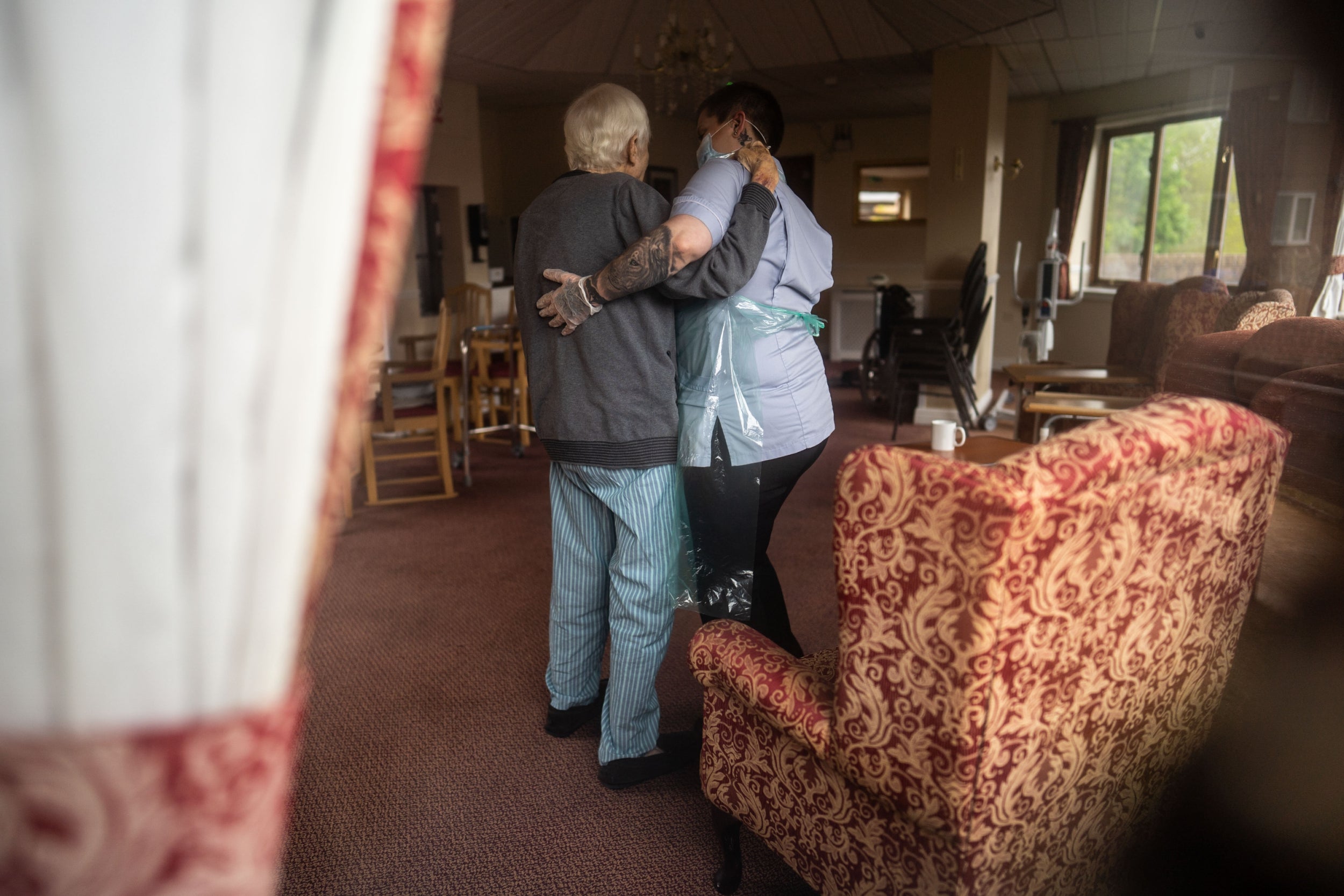
12/18
A carer wearing PPE helps Jack Dodsley, 79
Tom Maddick/SWNS
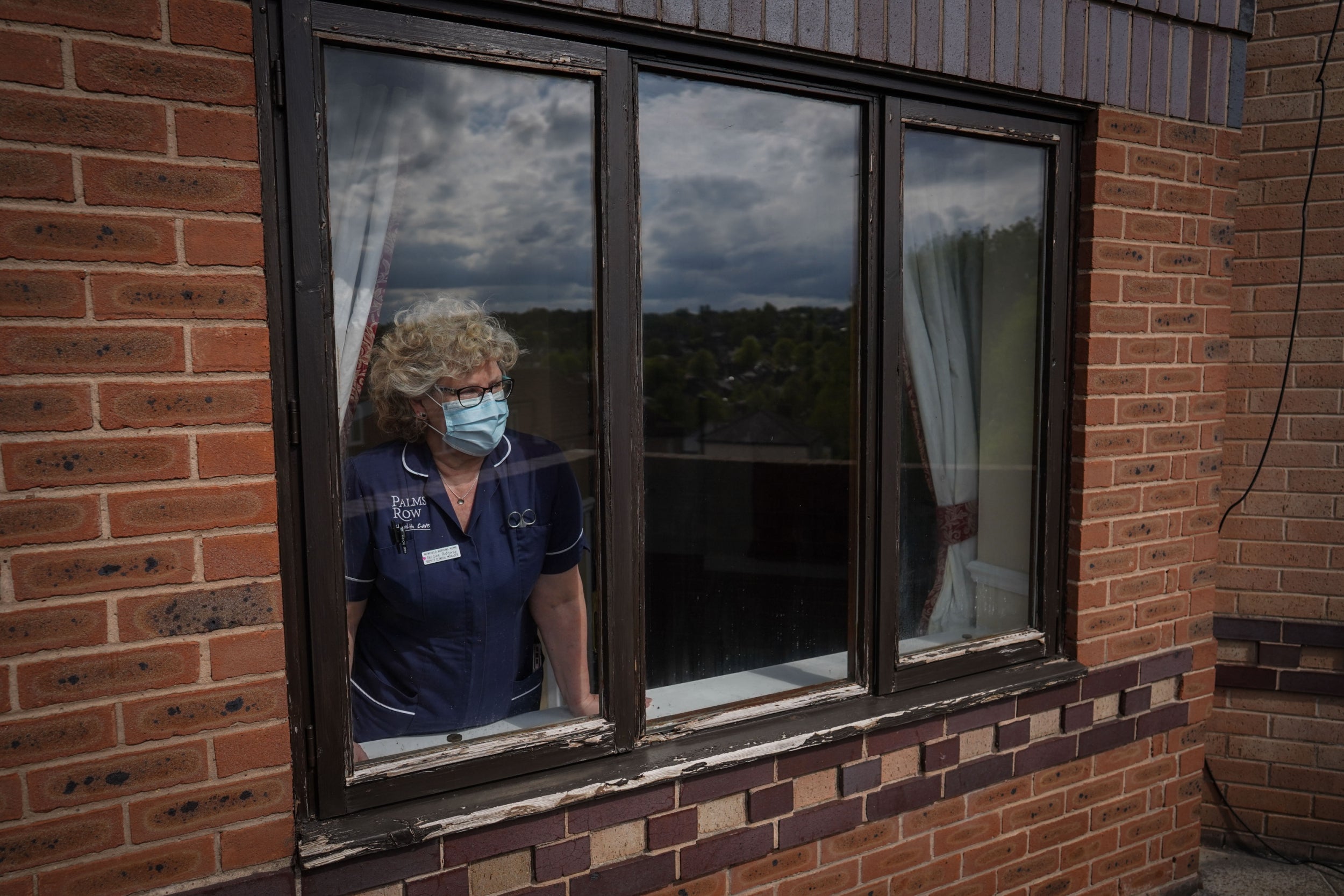
13/18
A staff member at Newfield Nursing Home
Tom Maddick/SWNS
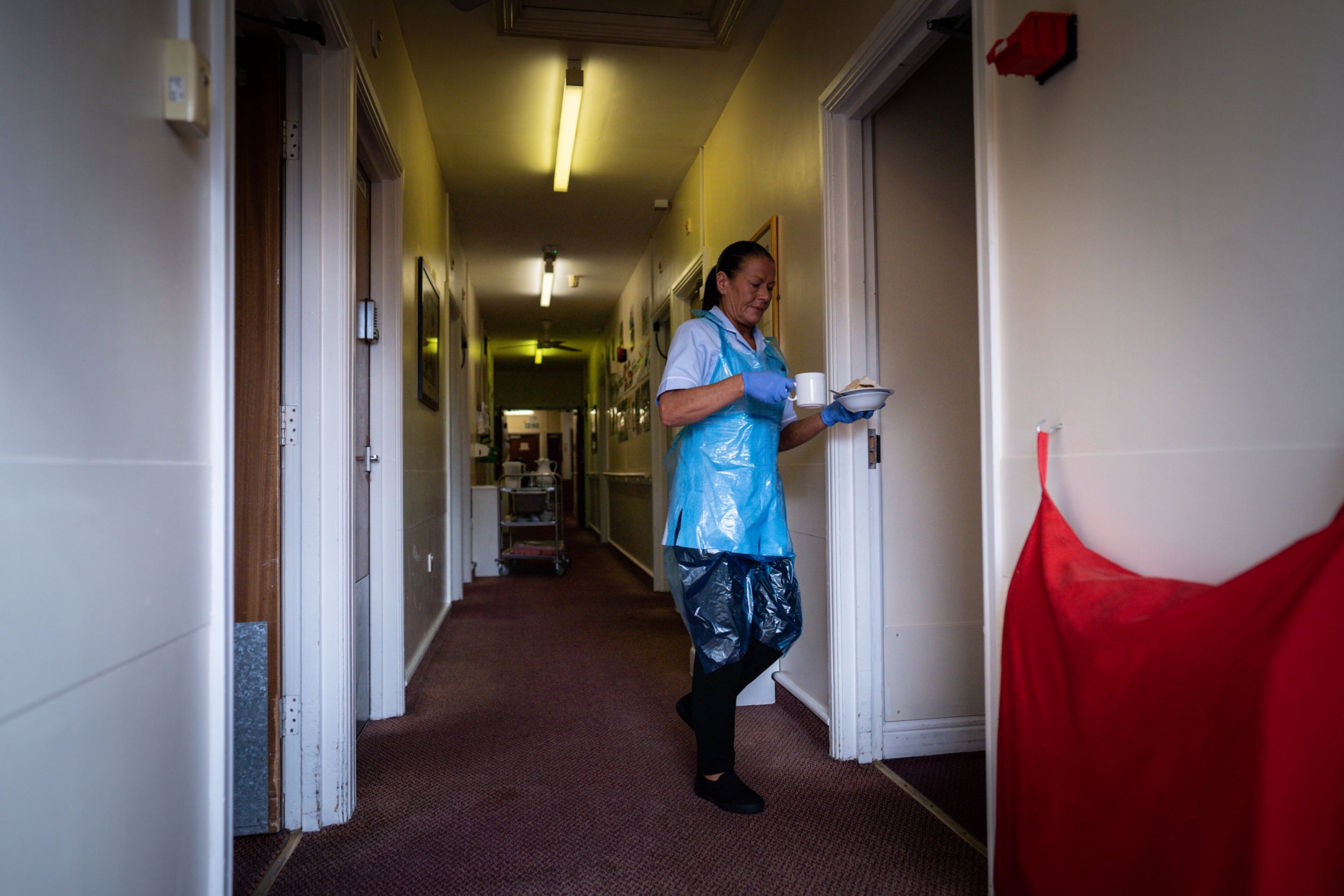
14/18
A carer brings food to a resident at Newfield Nursing Home
Tom Maddick/SWNS
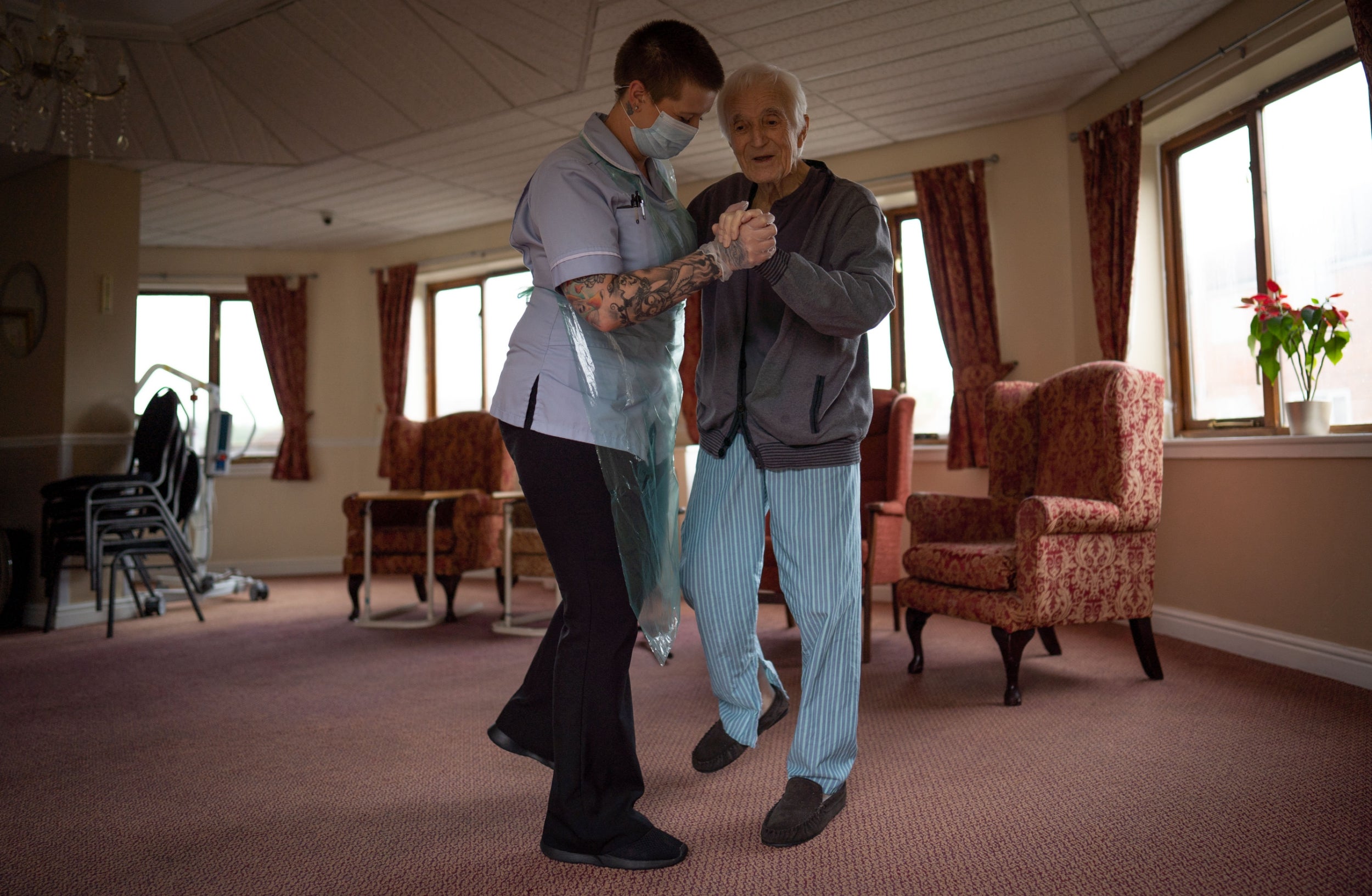
15/18
Jack Dodsley, 79, with a carer in PPE
Tom Maddick/SWNS
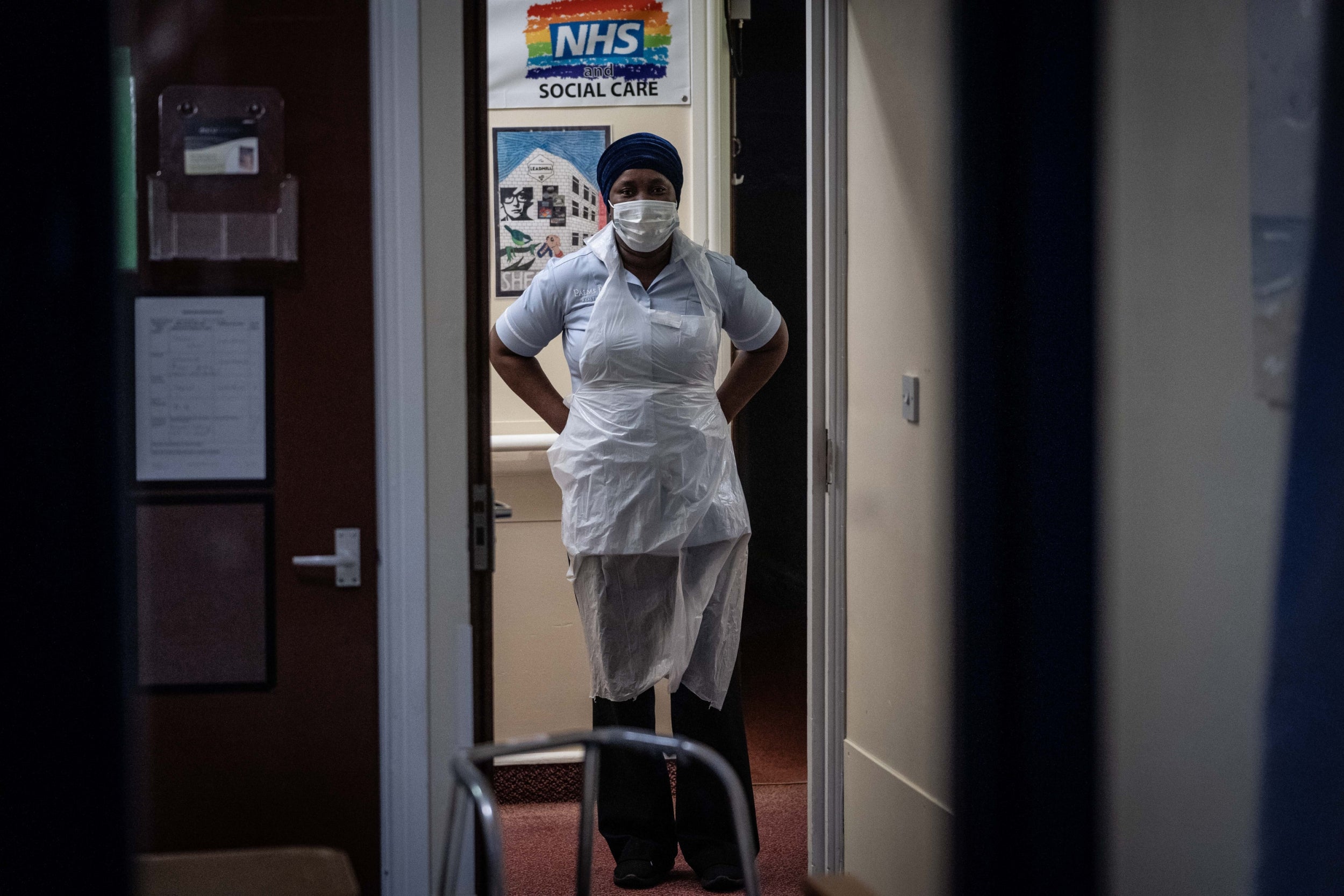
16/18
A staff member puts on PPE at Newfield Nursing Home
Tom Maddick/SWNS
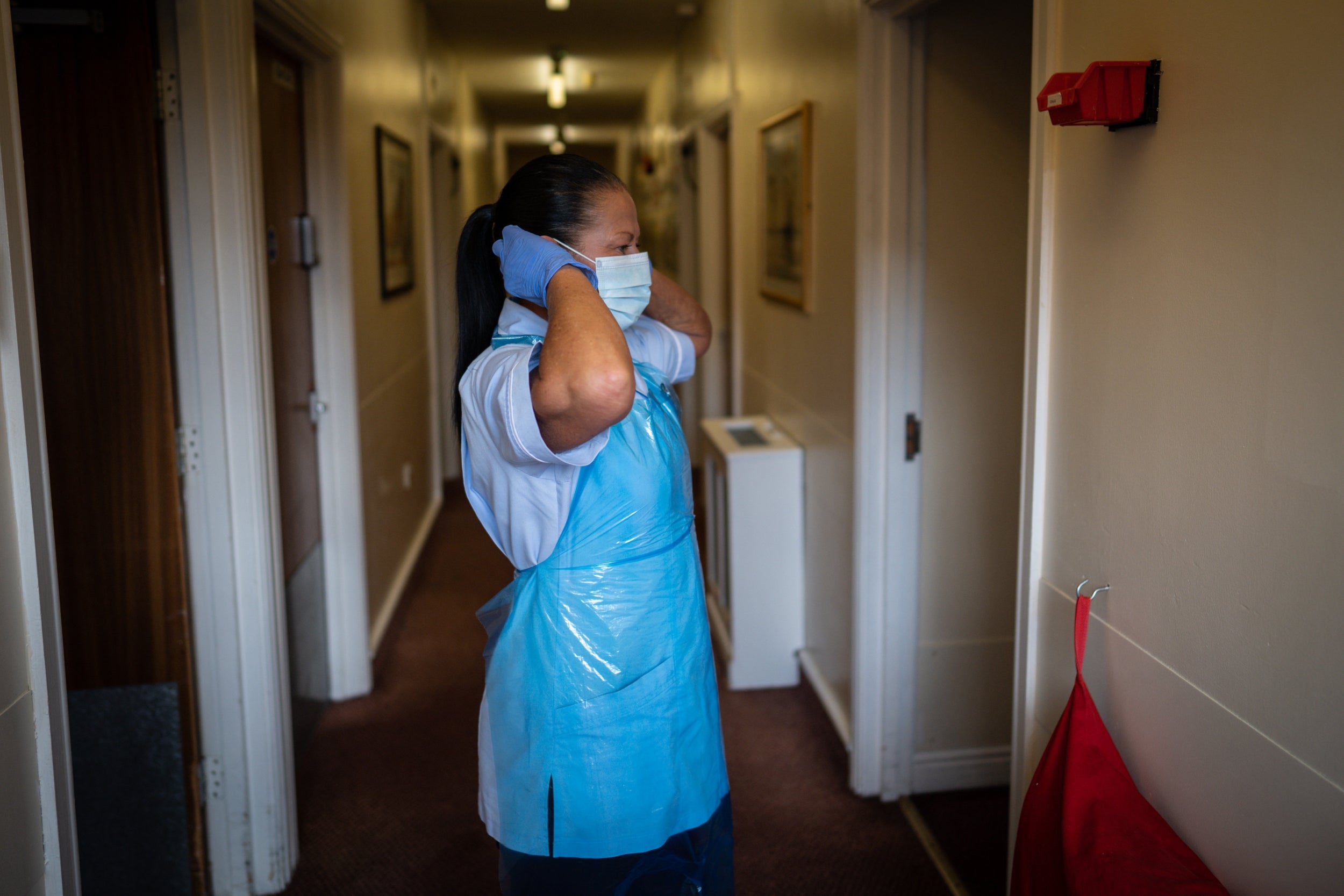
17/18
Jackie Wilson, a healthcare assistant, puts on PPE before she enters a room
SWNS
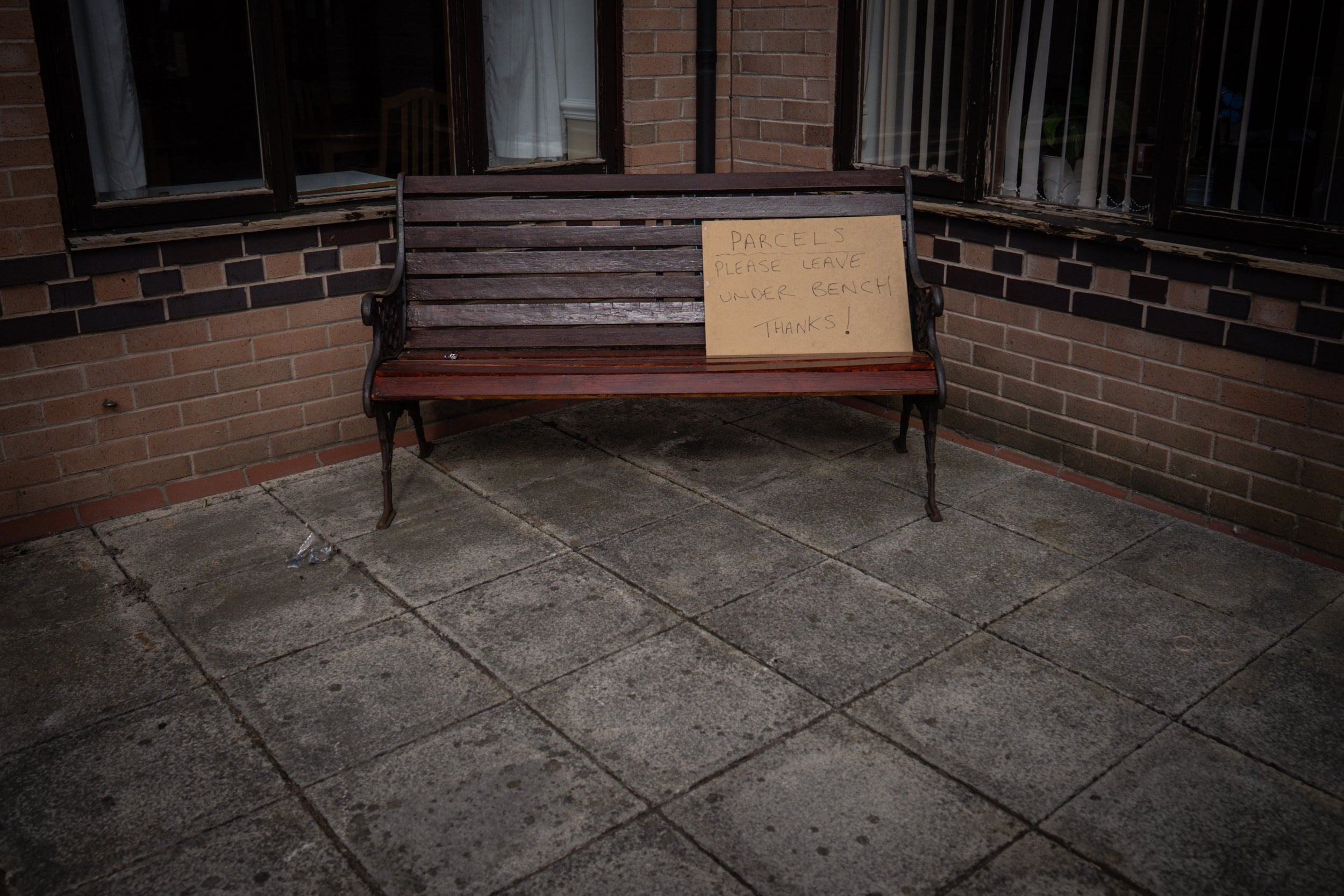
18/18
A bench at Newfield Nursing Home
Tom Maddick/SWNS

1/18
Jack Dodsley, 79, with a carer in PPE at Newfield Nursing Home
Tom Maddick/SWNS

2/18
Jackie Wilson, a healthcare assistant, wearing PPE before going into rooms
Tom Maddick/SWNS

3/18
Jack Dodsley, 79, speaks to a carer at Newfield Nursing Home
Tom Maddick/SWNS

4/18
Carers working at Newfield Nursing Home
Tom Maddick/SWNS

5/18
A care worker wearing PPE opens a drink carton
Tom Maddick/SWNS

6/18
Jack Dodsley, 79, sits with a carer
Tom Maddick/SWNS

7/18
Jack Dodsley, 79, with a carer in PPE
Tom Maddick/SWNS

8/18
A care staff member wearing PPE
Tom Maddick/SWNS

9/18
A staff member at Newfield Nursing Home looks after a resident
SWNS

10/18
A carer wearing PPE uses a speaker
Tom Maddick/SWNS

11/18
A carer helps Jack Dodsley, 79, from his chair
Tom Maddick/SWNS

12/18
A carer wearing PPE helps Jack Dodsley, 79
Tom Maddick/SWNS

13/18
A staff member at Newfield Nursing Home
Tom Maddick/SWNS

14/18
A carer brings food to a resident at Newfield Nursing Home
Tom Maddick/SWNS

15/18
Jack Dodsley, 79, with a carer in PPE
Tom Maddick/SWNS

16/18
A staff member puts on PPE at Newfield Nursing Home
Tom Maddick/SWNS

17/18
Jackie Wilson, a healthcare assistant, puts on PPE before she enters a room
SWNS

18/18
A bench at Newfield Nursing Home
Tom Maddick/SWNS
Minutes from meetings in May revealed Sage suggested more stringent contact tracing criteria than is being adopted, recommending that people should be told to isolate if they come into contact with someone who has symptoms.
The new test, track and trace system recommends people isolate only if they have been in close contact with someone who has tested positive for Covid-19.
Experts looked at introducing social “bubbles” to allow people to see family and friends in early May but concluded that such a move carried “potential unforeseen risks”.
On mask wearing, the panel concluded on 21 April that “there is enough evidence to support recommendation of community use of cloth face masks, for short periods in enclosed spaces, where social distancing is not possible”. But ministers did not issue public advice on masks until 11 May.
In May, the experts said it was unclear whether children were as likely to spread coronavirus as adults. But some “variable evidence” indicated children under 13 were less likely to transmit the virus.
The minutes also showed the scientists’ hesitancy at advising a lockdown, which was finally imposed on 23 March.
Ten days earlier, they wrote: “Sage was unanimous that measures seeking to completely suppress spread of Covid-19 will cause a second peak.
“Sage advises that it is a near certainty that countries such as China, where heavy suppression is under way, will experience a second peak once measures are relaxed.”


